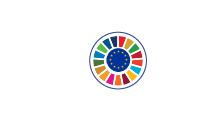Methodology

The SDG Mapping Tools of EU Policies
The mapping of EU actions into the space of the Sustainable Development Goals (SDGs) can contribute to the mainstreaming of the Agenda 2030 in the European Union. A better understanding of the relationship between EU policies and the 169 targets defined by the UN in the Agenda 2030 can support policy coherence for sustainable development and allows to identify potential areas of intervention where more efforts are needed, supporting policymakers in finding adequate responses to the challenges.First Policy Mapping and updating
The first policy mapping was carried out in 2017, considering all the actions of the Juncker Commission and their contribution to the UN 2030 Agenda for Sustainable Development up to 2017. The first review was comprised of actions mentioned in the main planning documents of each Commission Directorates-General:• Management Plan 2016;
• Strategic Plan 2016-2020.
The list of relevant actions detected in these documents have been related to EC official documentation, mainly Communications, Regulations, Decisions and Directives extracted from the EUR-Lex portal and then linked to the Sustainable Development Goals and their targets through textual analysis carried out by a group of experts. The resulting database of EU policies mapped with the SDGs was then approved and finalized in cooperation with each Department.
The review of mapping of EU policies with the 2030 Agenda has been performed in 2020 in order to update the KnowSDG Platform and provide evidence of the continued mainstreaming of the SDGs in all relevant EU policies by the Commission.
All actions of the Juncker Commission were taken into account, including those listed in the EC Secretariat-General reflection paper "Towards a sustainable Europe by 2030". This document provides an overview of the different key policy initiatives and actions relevant for the SDGs adopted by the Juncker Commission under the premise of mainstreaming the UN Agenda 2030 into EU activities.
Policy Mapping on the New Commission activities
In the Political Guidelines for the period 2019-2024, President von der Leyen’s Commission attributes a central role to the UN’s 2030 Agenda for Sustainable Development, making sustainable development the keystone of national and European policies. A second mapping considers the policy initiatives released during the von der Leyen Commission. Those were obtained by automatically extracting documents from EUR-Lex that are authored by the European commission and published between the 2019/12/01 and the 2022/09/20. The set of relevant documents was downloaded after filtering the resulting EUR-Lex data by including relevant legal acts and preparatory documents based on their CELEX code sector number and their document type1.The attribution of SDGs to each document has been performed in an automated way. Since the mapping aims to provide a greater level of detail, the entry point is the target-level. Different basic text mining steps (removal of special characters and stop words, lowercasing, etc.) were applied to the text of the Eur-Lex documents. Relevant SDG targets were identified through the detection of specifically designed keywords. These keywords combined with the applied text mining methods, helped in avoiding false negatives due to plural/singular of words, different varieties of the same word or the presence of different stop words (on, in at, and, or, etc.). The detected keywords were then aggregated to the target-level.
1Preparatory documents: Sector nr. 5 and document types PC, DC, JC, SC, EC, FC, GC.
Legal acts: Sector nr. 3 and document types R, L, D, S, K, H, G, C.
See this reference for further information about CELEX codes.
The results and visualization tools
The visualization tool presents the results, organized by goal, target, policy, in an interactive way. Starting from a global overview of how the EU policies are currently connected to the SDGs, it is possible to deepen more and more in detail, focusing on a specific goal, or target, or policy. With network analysis it is also possible to visualize the interlinkages between policies, highlighting the targets in common and potential overlaps.In this way, additional analysis and strategic interpretation can be performed on the results. For instance, the tool can help to:
a) identify gaps in SDG implementation in the context of EU policies;
b) recognize cross-cutting policies, most influential ones, with a strong connection to the SDGs;
c) highlight interlinkages between policies, in order to strengthen the policy coherence for sustainable development.
a) How do EU policies cover the SDGs on the Goal and Target-Level?
The policy mapping led to the overall identification of all the 17 SDGs and targets, with different prevalence.
See Overview of the policy mapping at goal and target level.
b) Which policies are the most cross-cutting ones?
The results of the analysis also provide an insight on the cross-cutting nature of the policies itself.
See the top EU actions that address the highest number of goals and targets, with the top policies covering all the goals and addressing more than 70 targets. See The most cross-cutting policies.
c) How coherent are EU policies in support of the SDG implementation?
In a third step, the output of the mapping results is used to identify the number of interconnected policies across the SDG framework. The results showed that some targets are simultaneously addressed by multiple policies.
Highlighting these interlinkages can help policy makers in understanding the implications of EU actions across the SDG framework.
See Understanding policy coherence.
Previous Page

